The 17th-century Dutch theorist and artist, Samuel van Hoogstraten, described landscape artists as “the common footmen in the Army of Art.” Maybe, maybe not. Artspace111, in Forth Worth, has a group show of gallery and guest artists titled Nature’s First Green is Gold, and the wide range of landscapes on view encompasses both realism and abstraction through varied media including oil paint, photography, and even beads. This show’s title comes not from van Hoogstraten but from a well-known Robert Frost poem.
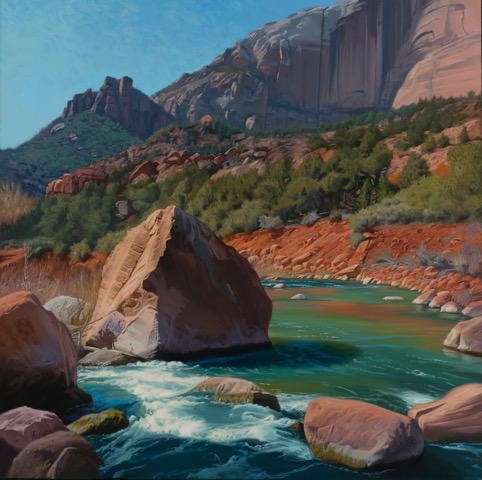
Dennis Farris, Virgin River Rock, oil on canvas.
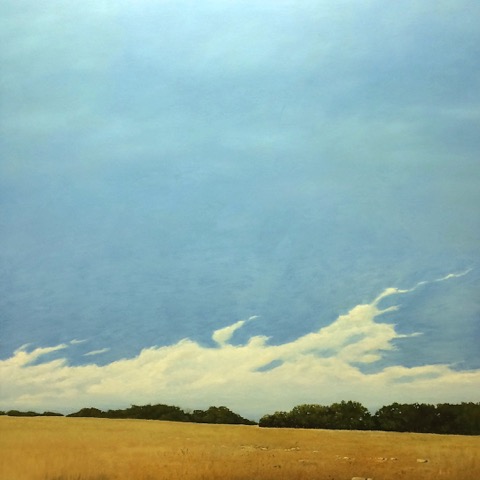
Scott Lennox, Crow Fields, oil on canvas.
The majority of the artists made traditional and realistic landscapes for the show. Among these traditionalists were Dennis Farris and Scott Lennox. Farris presents a polished, dramatic river scene in vivid color, while Lennox’s canvas is a less dramatic but wistful vista, with a more organic touch.
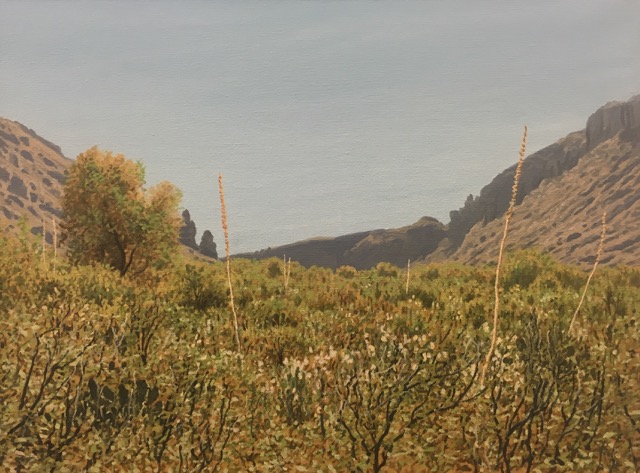
Dennis Blagg, Lost Paradise, oil on canvas.
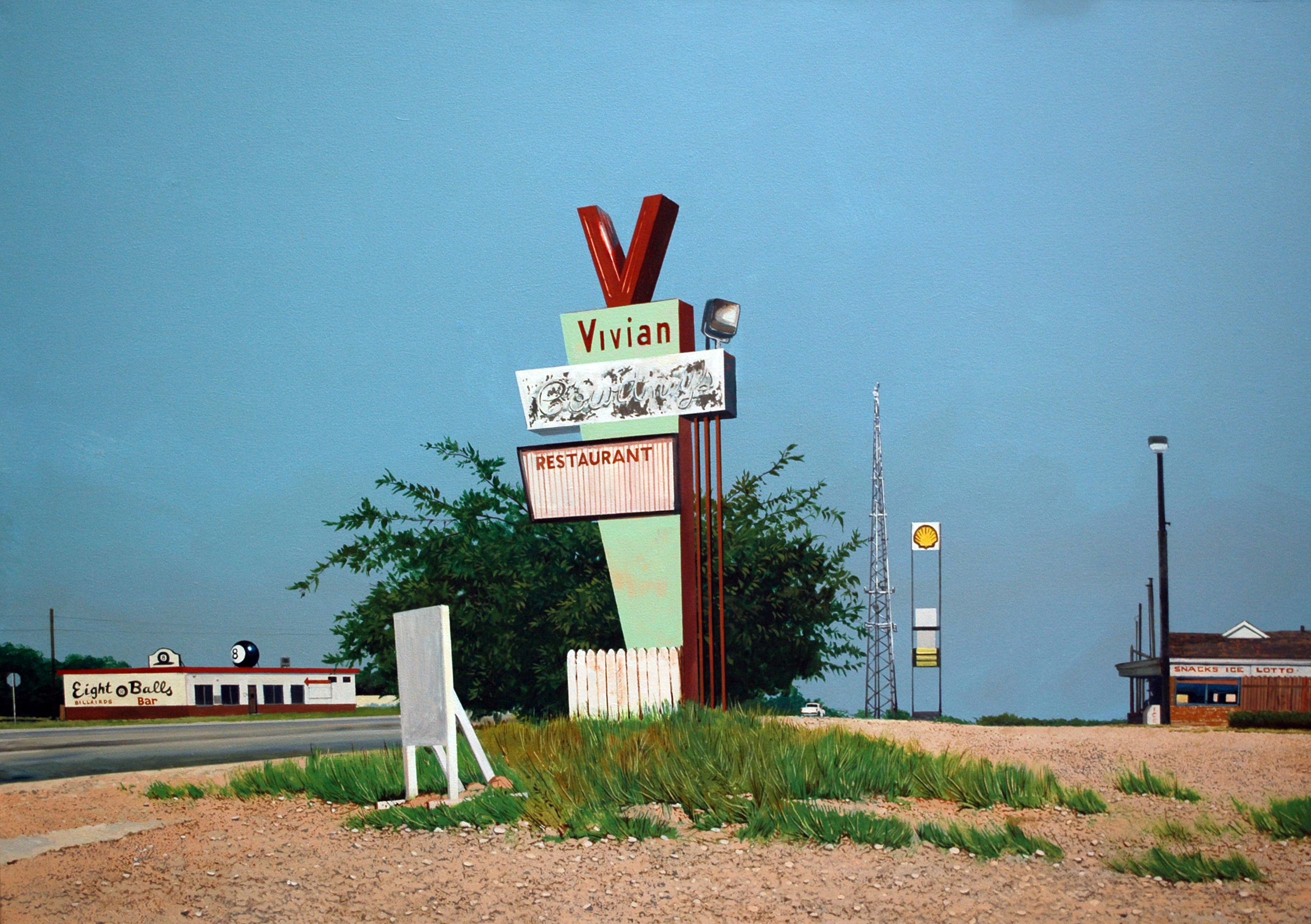
Daniel Blagg, Vivian’s, oil on canvas.
Dennis and Daniel Blagg are in their natural element with this show; Dennis’ canvases are of unspoiled nature, while Daniel characteristically focuses on the urban landscape. Dennis’ Lost Paradise captures the deep space of a canyon, as light brushstrokes suggest foreground vegetation. Daniel revels in still visions of the disused and abandoned, and in Vivian’s he pays homage to a vestigial commercial sign located on Fort Worth’s Jacksboro Highway—Vivian’s Country Restaurant having long since disappeared from the scene.
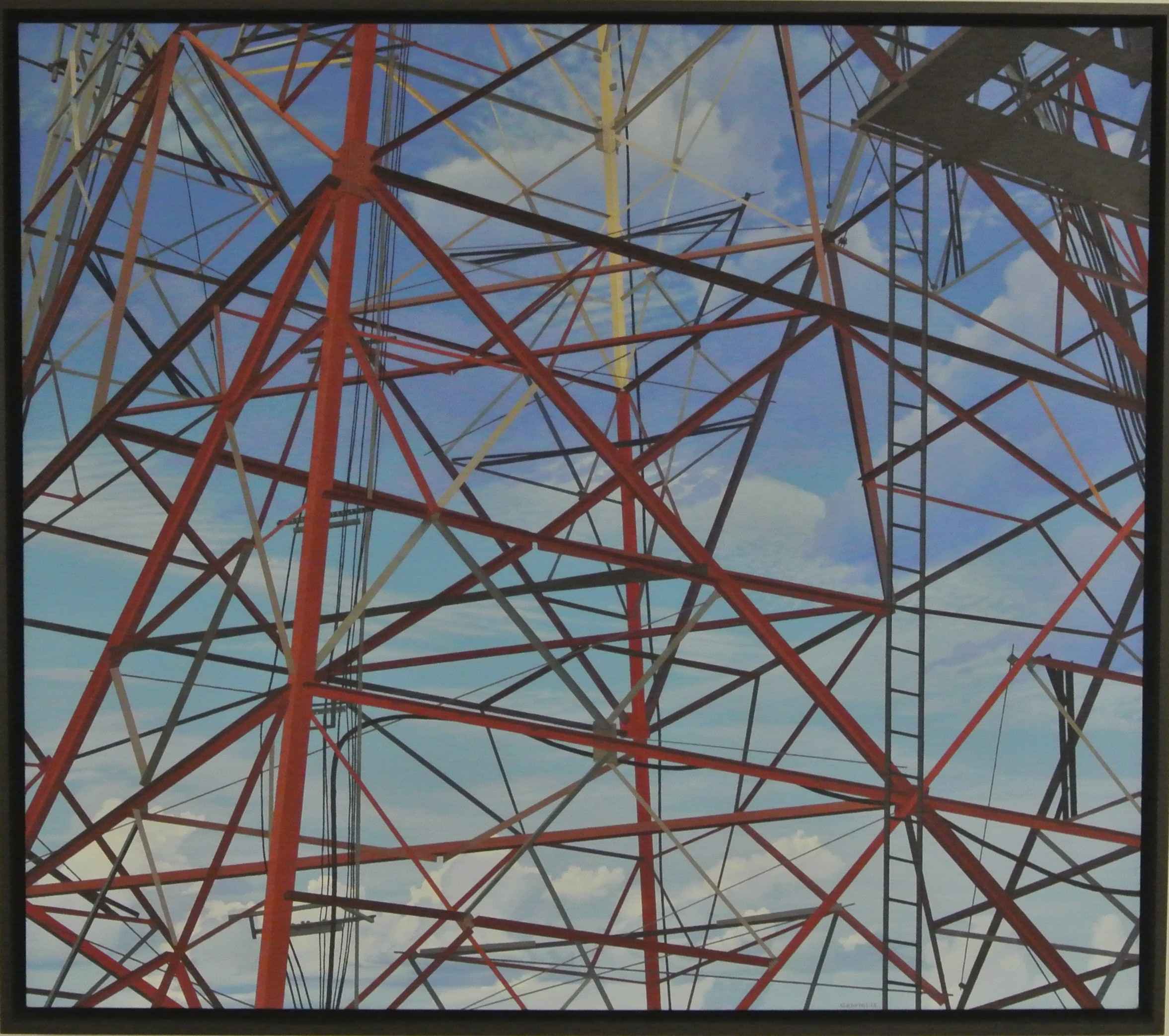
Pat Gabriel, Coexistence of Grace, oil on canvas.
Pat Gabriel combines a man-made structure with nature in Coexistence of Grace. His paintings often feature sky and cloud forms, but in this work he diametrically opposes the open steel structure with glimpses of the sky’s atmosphere.
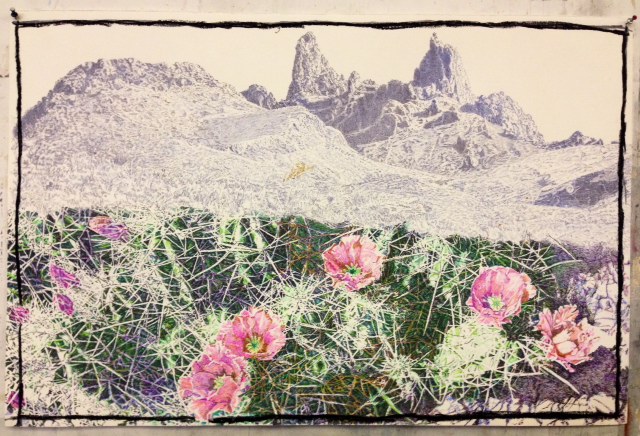
Jim Malone, Flowers of Love Spring from the Thornes of Life, marker pens, spray paint on paper.
Jim Malone has long depicted beautifully drawn desert landscapes with colored marker pens—his signature dense, scribbled drawing technique picks out cactus spines and underbrush in Flowers of Love Spring from the Thornes of Life.
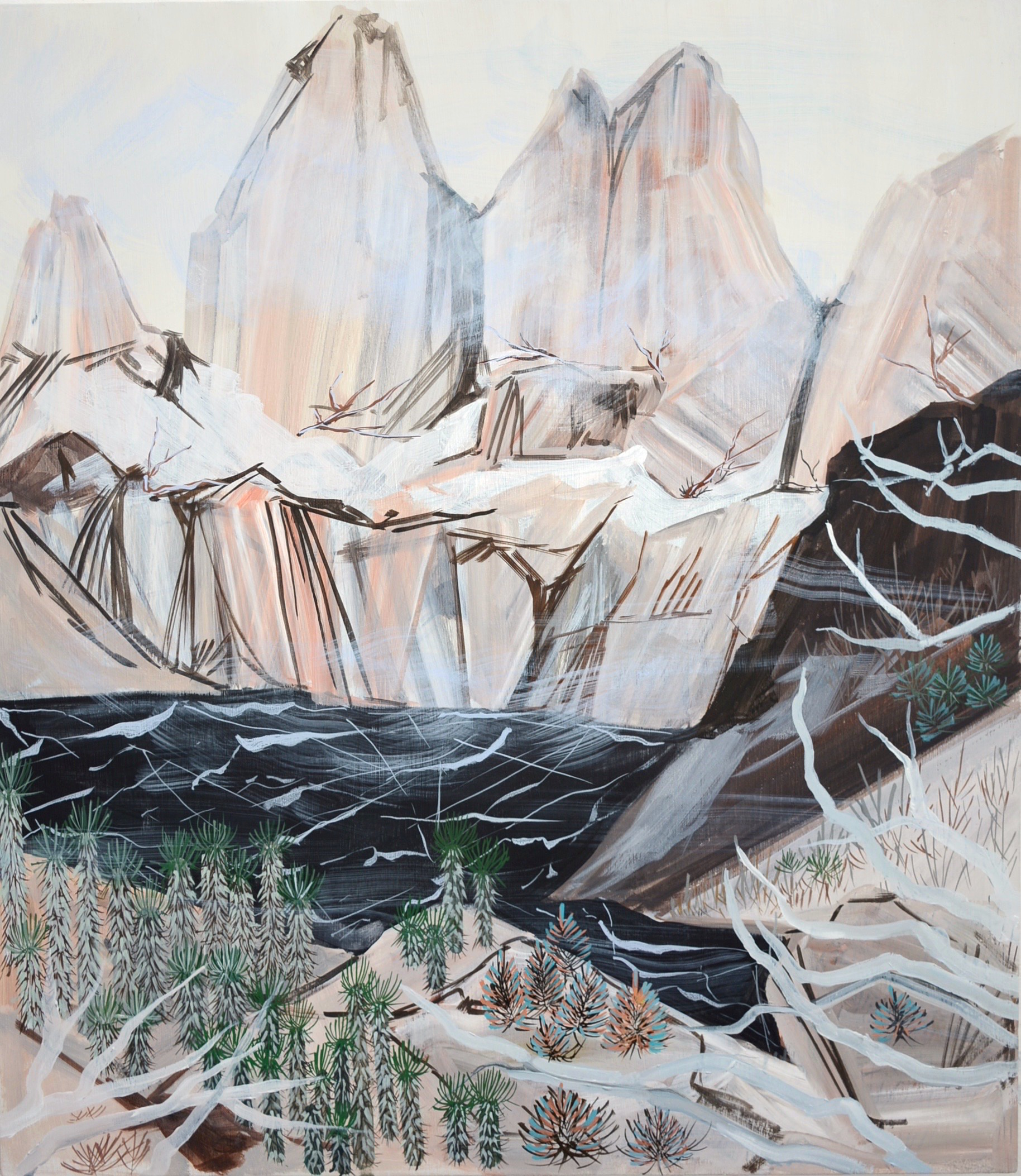
Erika Duque, Black Lake Mountain, acrylic pigment on wood panel.
Erika Duque uses a combination of quick expressive brushstrokes over thinly painted backgrounds to suggest plants, trees, mountains and other natural features in Black Lake Mountain. Duque’s Roadside contains a delightful abstraction of a stream that is simply composed of several braided lines of color.
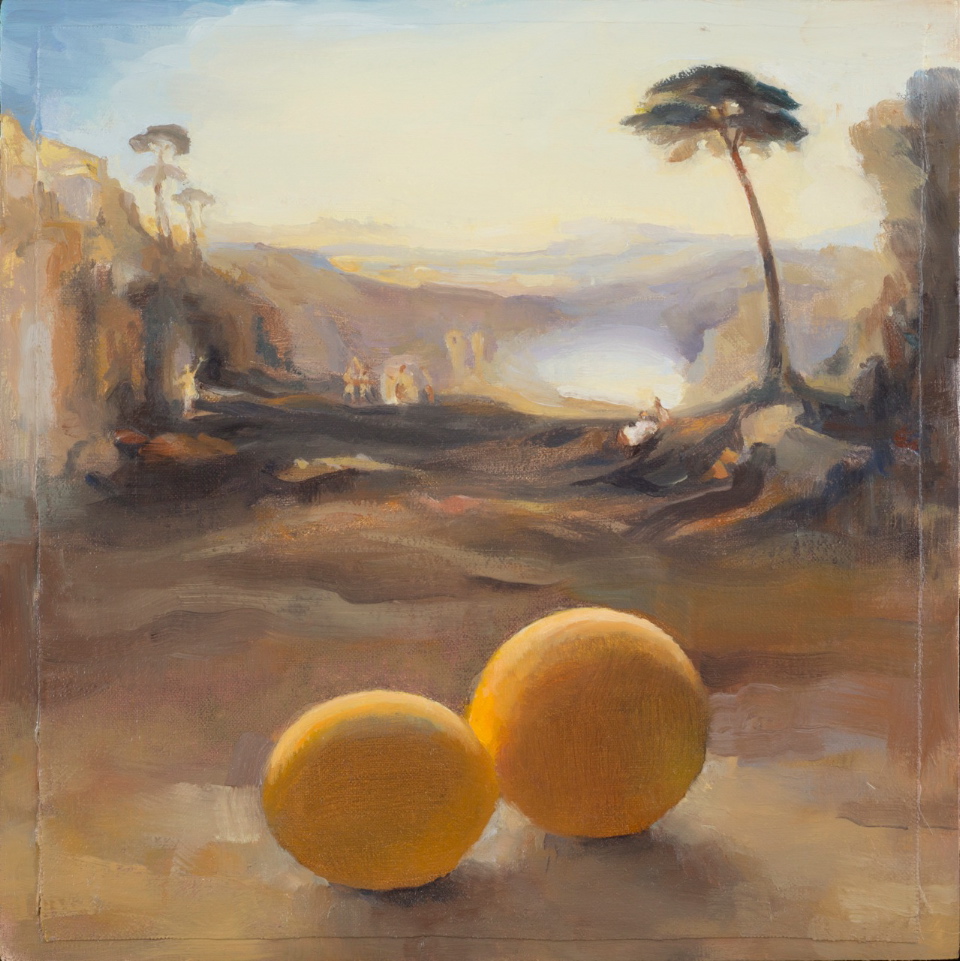
Carol Ivey, Romantic Landscape: The Golden Bough after Turner with Lemons, oil on linen panel.
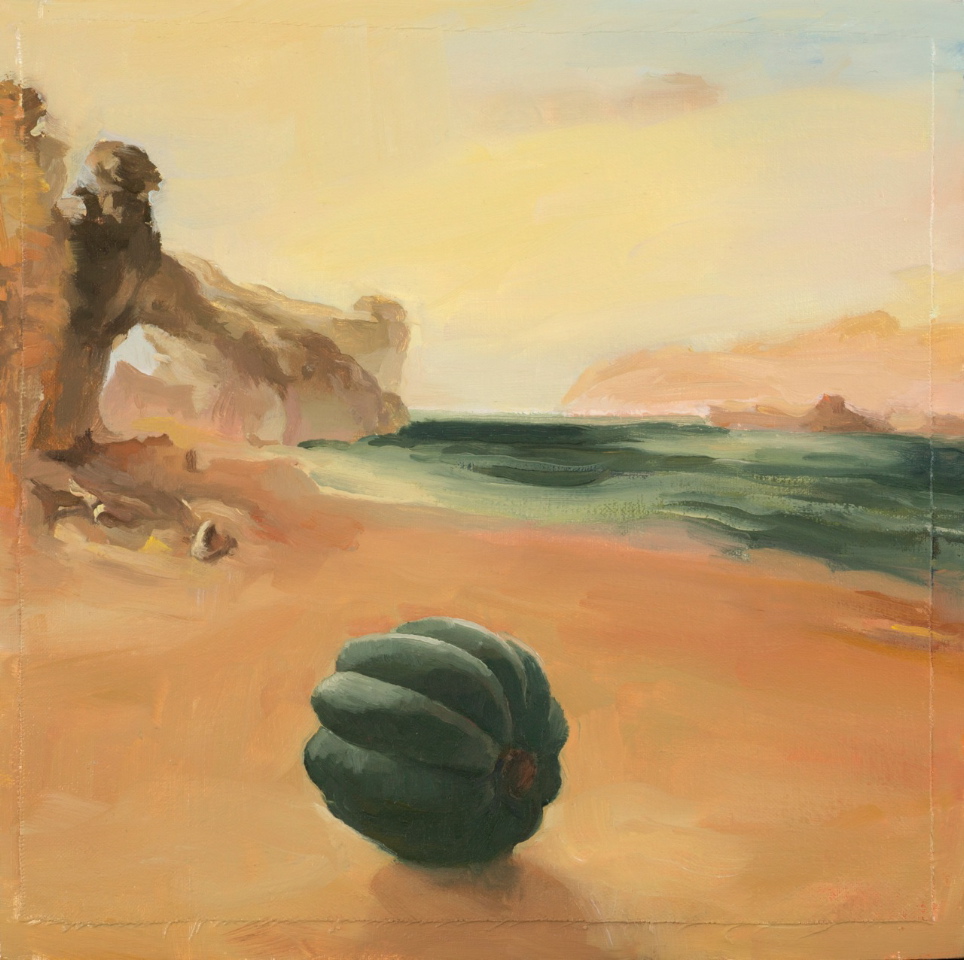
Carol Ivey, Romantic Landscape: Rocky Bay after J.M.W. Turner with Winter Squash, oil on linen panel.
It was interesting to see some gallery artists flex their creative muscles to tackle landscape, even when they typically concentrate on other subject matter. Carol Ivey makes a playful embellishment to her luminous still life subjects by situating lemons and winter squash in the foregrounds of two J.M.W. Turner-inspired vistas. Her diminutive compositions slyly subvert the academic hierarchy of genres by placing a still life—once considered the lowest genre on the academic rung—squarely front and center before a grand landscape tableau.

John Hartley, Mars, oil on canvas.
John Hartley doesn’t usually paint landscapes either, so it’s no surprise that his Martian landscape is dominated by a meticulous rendering of a toy robot. The photorealistic landscapes to be found in Mars and in Hartley’s typical works are in the detailed surfaces of the toys themselves.
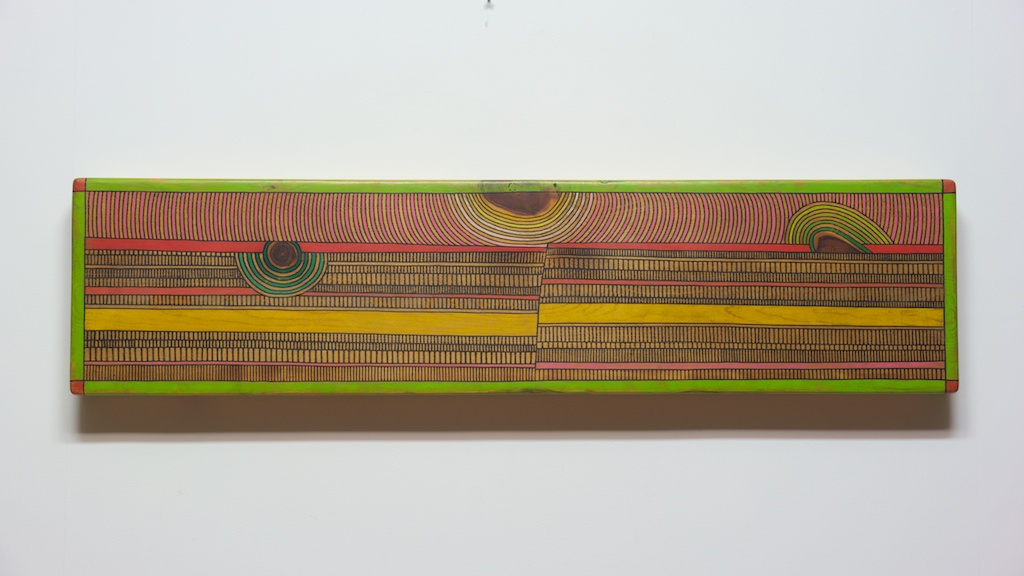
Danville Chadbourne, Geometric Visions – Fracture, ink and acrylic on wood.
Eschewing realism altogether, Danville Chadbourne’s Geometric Visions – Fracture cleverly marries an abstract landscape with the wood it is painted/drawn on. This abstracted section view of a geological fault features radiating circular forms emanating from actual knotholes in the wood support.
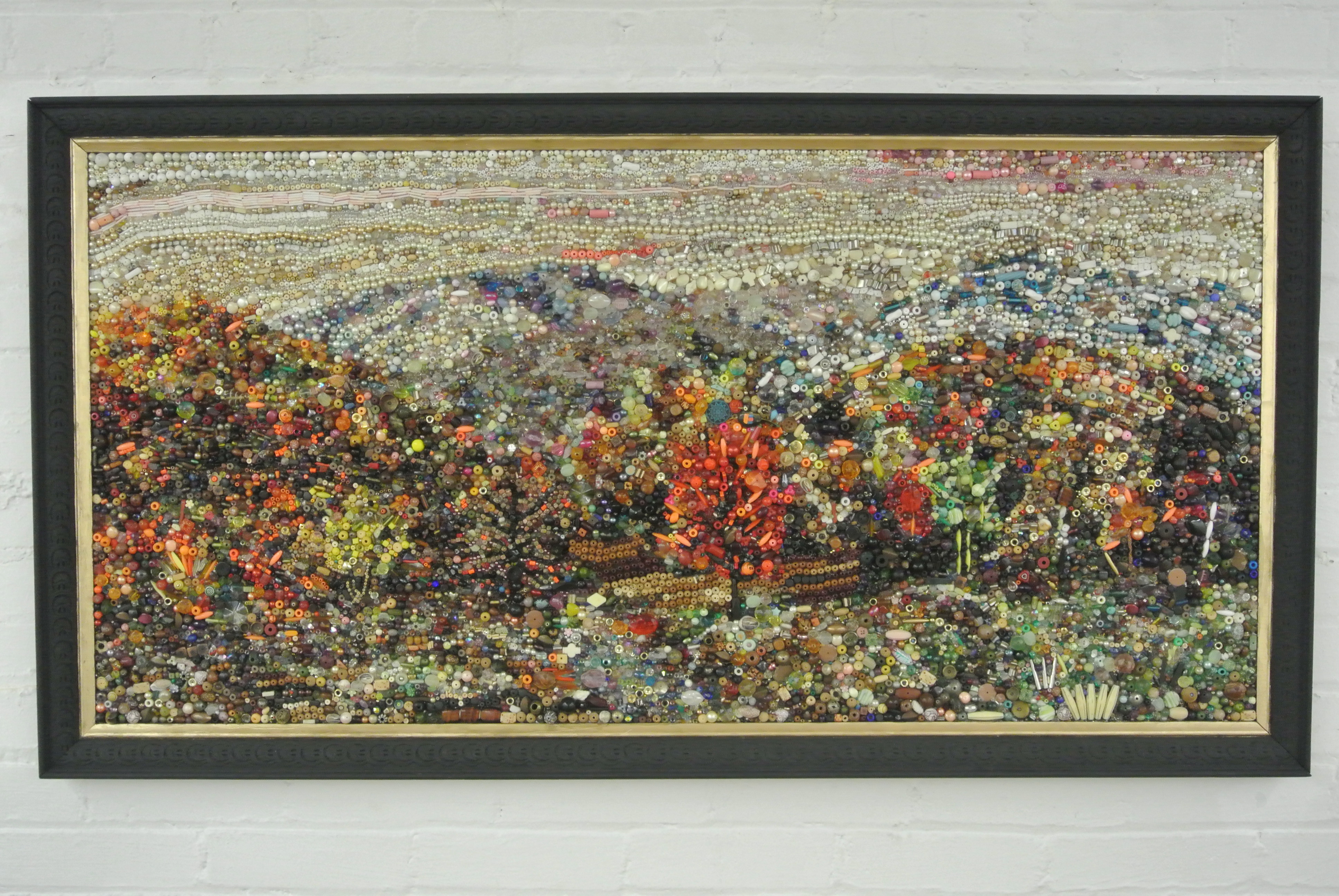
Kelli Holmes, Beadscape, mixed media.
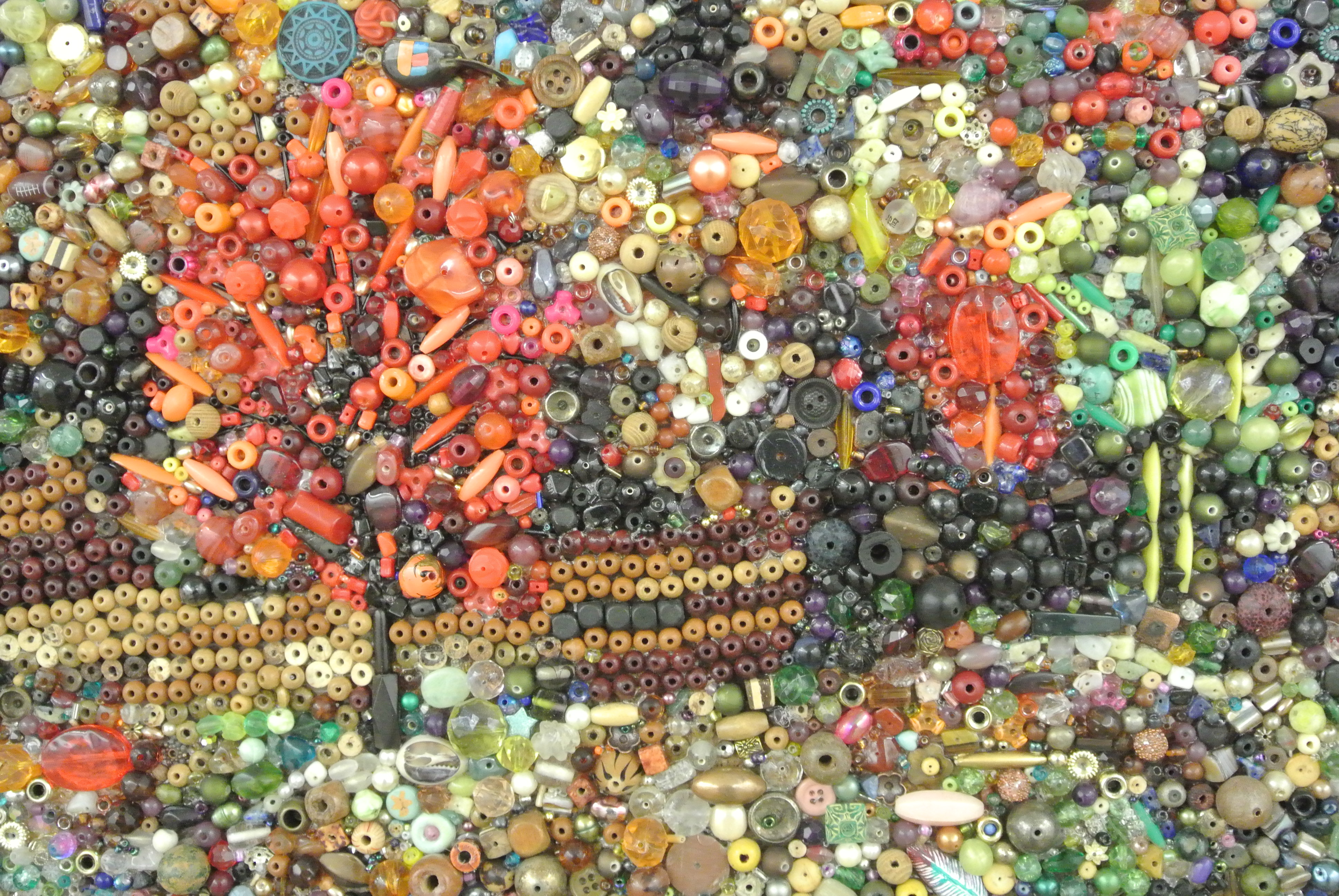
Kelli Holmes, Beadscape (detail).
Another inventive and unlikely take on the landscape theme was Kelli Holmes’ beaded confection Beadscape. This mixed-media work exploits the rainbow spectrum of hues and the textural qualities of beads glued on a wood support.

Jill Johnson, Tex Randall #2, chromogenic color print.
Jill Johnson offers a quartet of color photographs of unique and sometimes wry roadside signs and attractions from her small-town Texas series, including Tex Randall #2.
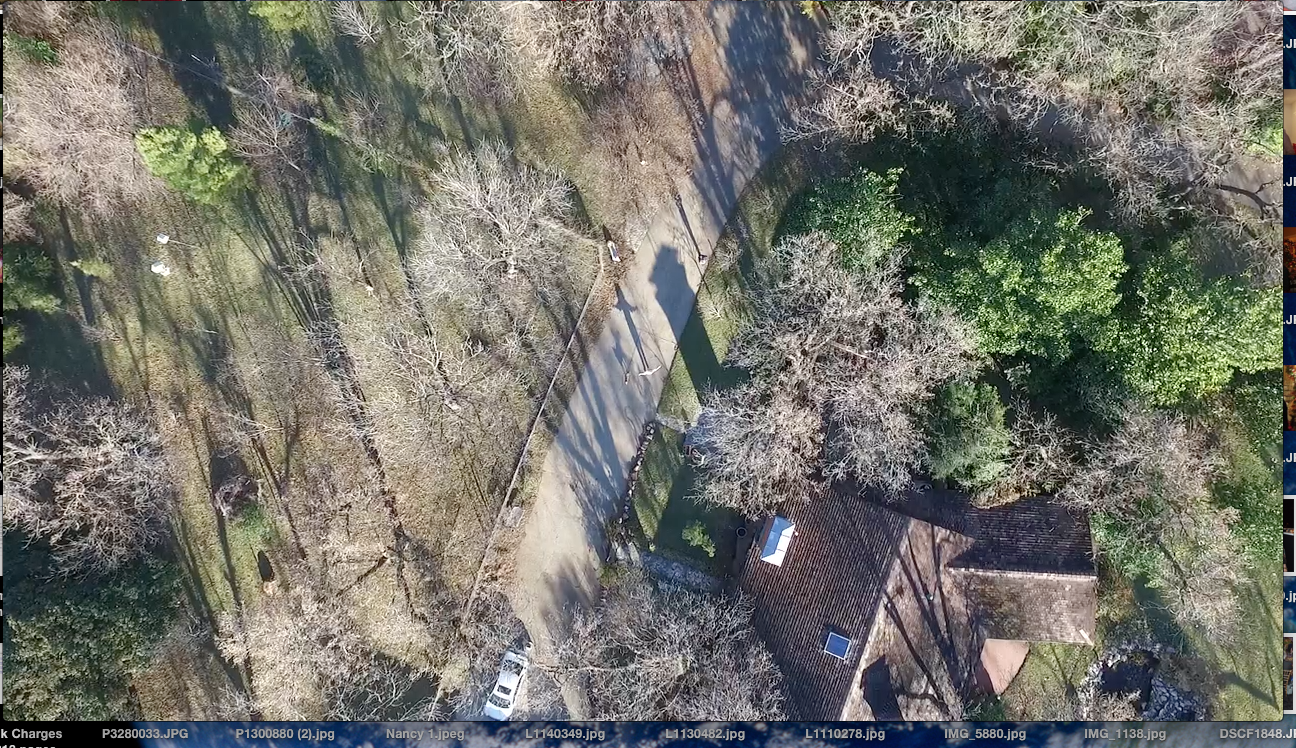
Nancy Lamb in association with Tyler Bates, Home Sweet Home, inkjet print on metal.
Nancy Lamb’s aerial photograph, Home Sweet Home, presents a conventional modern house isolated by looming shadows cast by the surrounding trees, suggesting the effect that time and distance have in obscuring memories of familiar places.
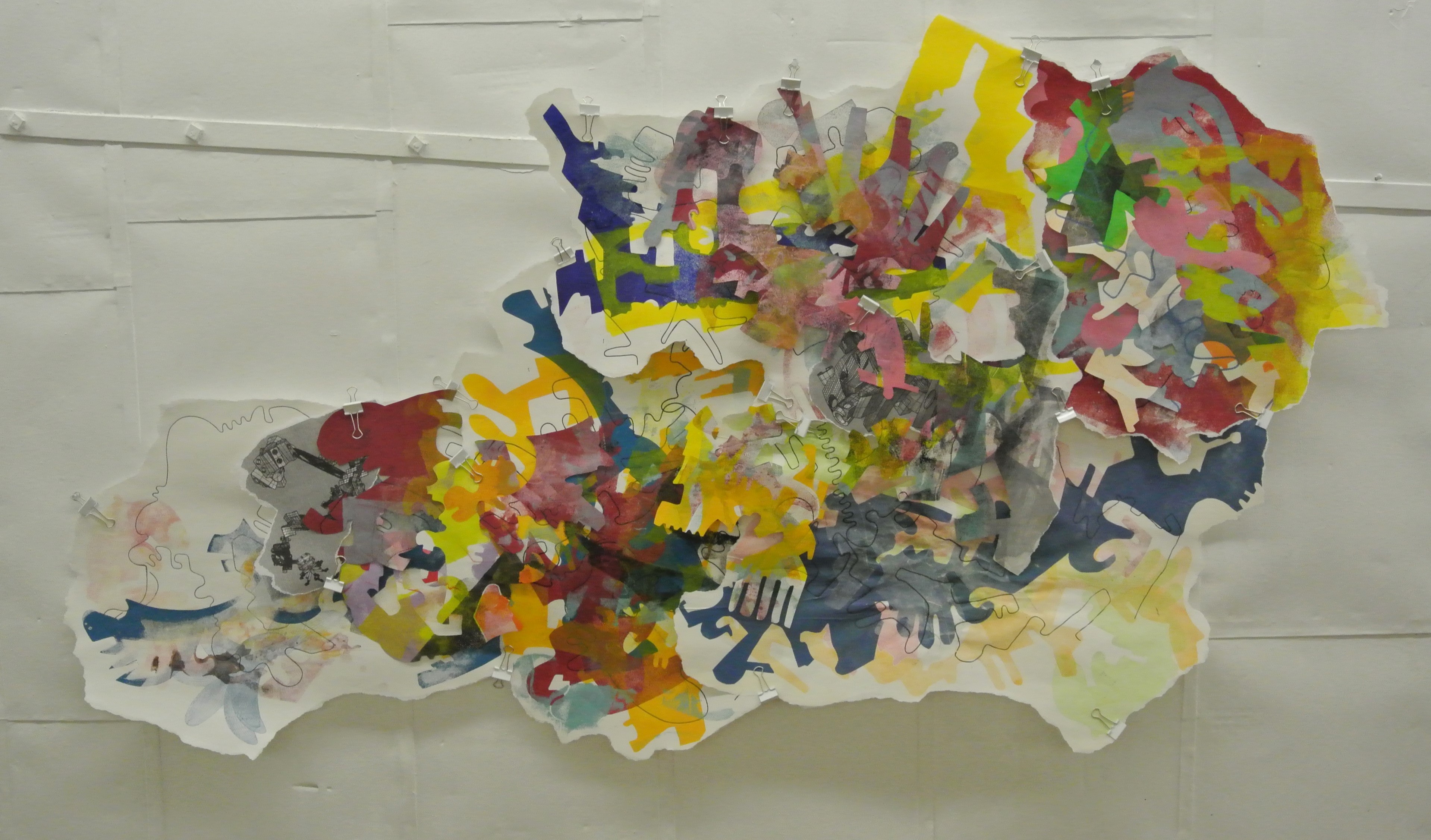
Fred Spaulding, Clouds over New Mexico #11416202p-as111, mixed media.
Fred Spaulding contributed one of the most innovative works in the show. Spaulding overlays painted, stenciled and printed computer drawings on torn and cut paper into a free-form collage. This is the first time he’s exhibited one of these works. Reportedly, he has a twelve-foot-long collage that I hope to see installed in a future show. This piece was a satisfying conclusion to a wide-ranging exhibition.
Through March 12 at Artspace111 in Fort Worth.


